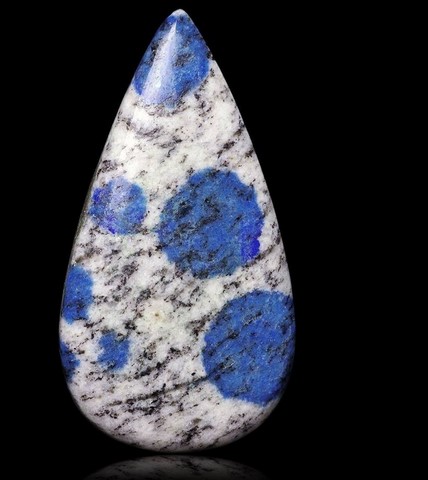AZURITE
Class : Carbonates, nitrates, borates
Subclass : Anhydrous carbonates
Crystal system : Monoclinic
Chemistry : Cu2(CO3)2(OH)2
Rarity : Common
Azurite is a common secondary carbonate in the oxidation zone of copper deposits where it coexists with other secondary copper minerals such as malachite. Its name comes from "lazhward" Persian (blue) by allusion to its color, a beautiful night blue. It is a mineral known since Antiquity. The crystals are mostly well formed and large. They have various facies, often tabular or elongated, more rarely short prismatic or pseudorhombohedral. The faces are often slightly striated, the aggregates in rosettes of prismatic crystals are more anecdotal. Azurite is more rarely massive, in concretions or stalactites. It should be noted that malachite can commonly replace azurite crystals (pseudomorph). Azurite is a mineral much sought after by mineral collectors when it comes in beautiful crystals. It was also widely used in European art from the 15th to the 17th century as a pigment ; crushed, it was used to color ceramics and stained glass. It can be cut in cabochons for jewelery. Finally, it can constitute an interesting copper ore in the superficial area of some deposits.
Main photo : Azurite from Kerrouchene, Khénifra Province, Meknès-Tafilalet Region, Morocco
Azurite in the World

Azurite in France
Azurite is quite common on French territory, however the best known deposit is that of the blue mine of Chessy in the Rhône Department which delivered single crystals of more than 5 cm known under the name of chessylite, call today only sometimes maintained in France. It is also found in coating in the Cap Garonne copper mine (Var), and more anecdotally on the alpine deposits, Les Mas Dieu (Gard), etc ...
Twinning and special forms
Azurite twins are very rare, the most "common" is the cross twin that found mainly on the Kerrouchene deposit in Morocco.
Malachite often pseudomorph some crystals. Azurite can also sometimes replace some fossils.
Fakes and scams
Some cabochon cut for jewelery may have been reconstituted.
Hardness : 3.5 to 4
Density : 3.7 to 3.8
Fracture : Conchoidal
Trace : Blue
TP : Opaque to transparent
IR : 1,730 to 1,838
Birefringence : 0,108
Optical character : Biaxial +
Pleochroism : Medium
Fluorescence : None
Solubility : Acid and ammonia
Magnetism : Very weak
Radioactivity : None









